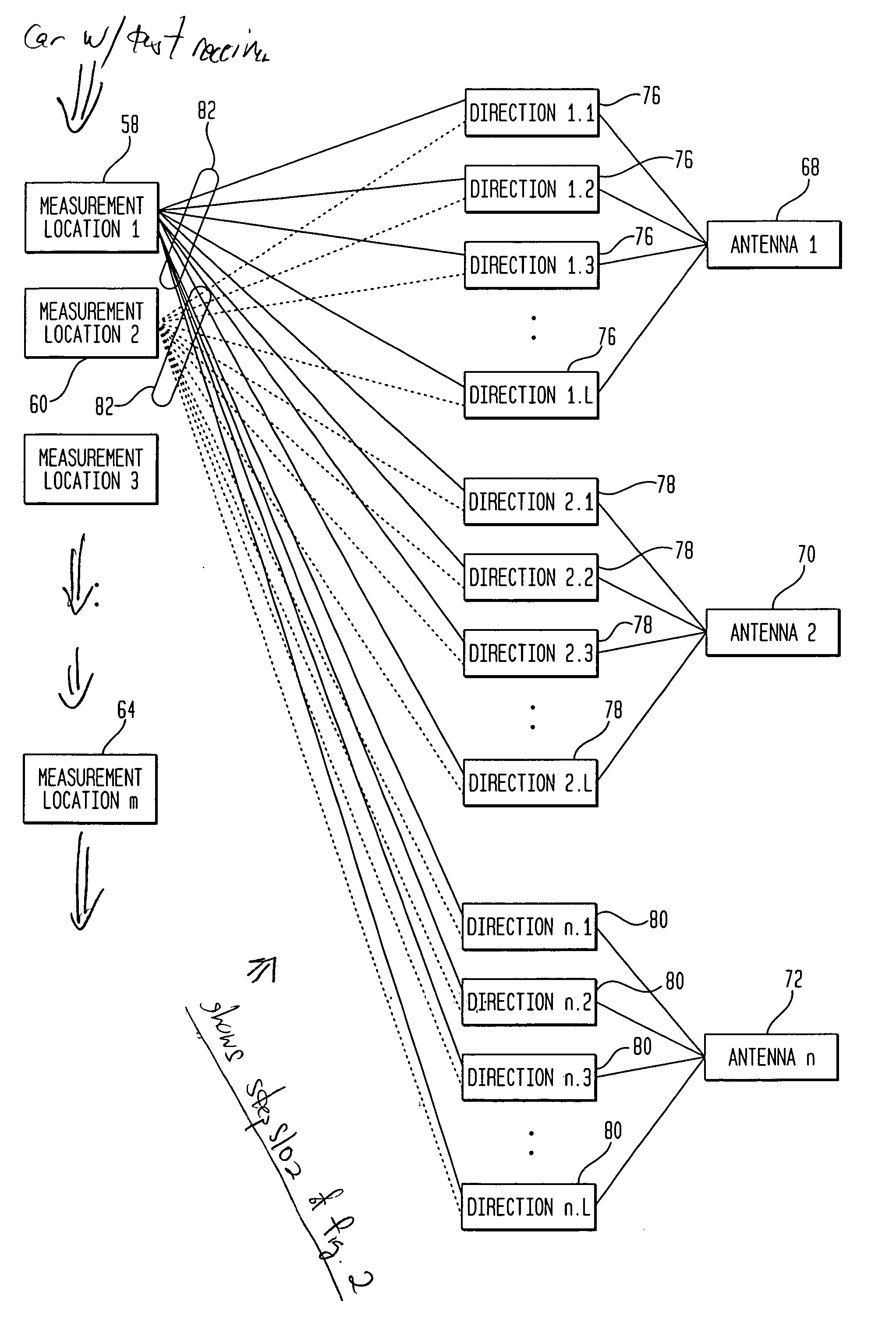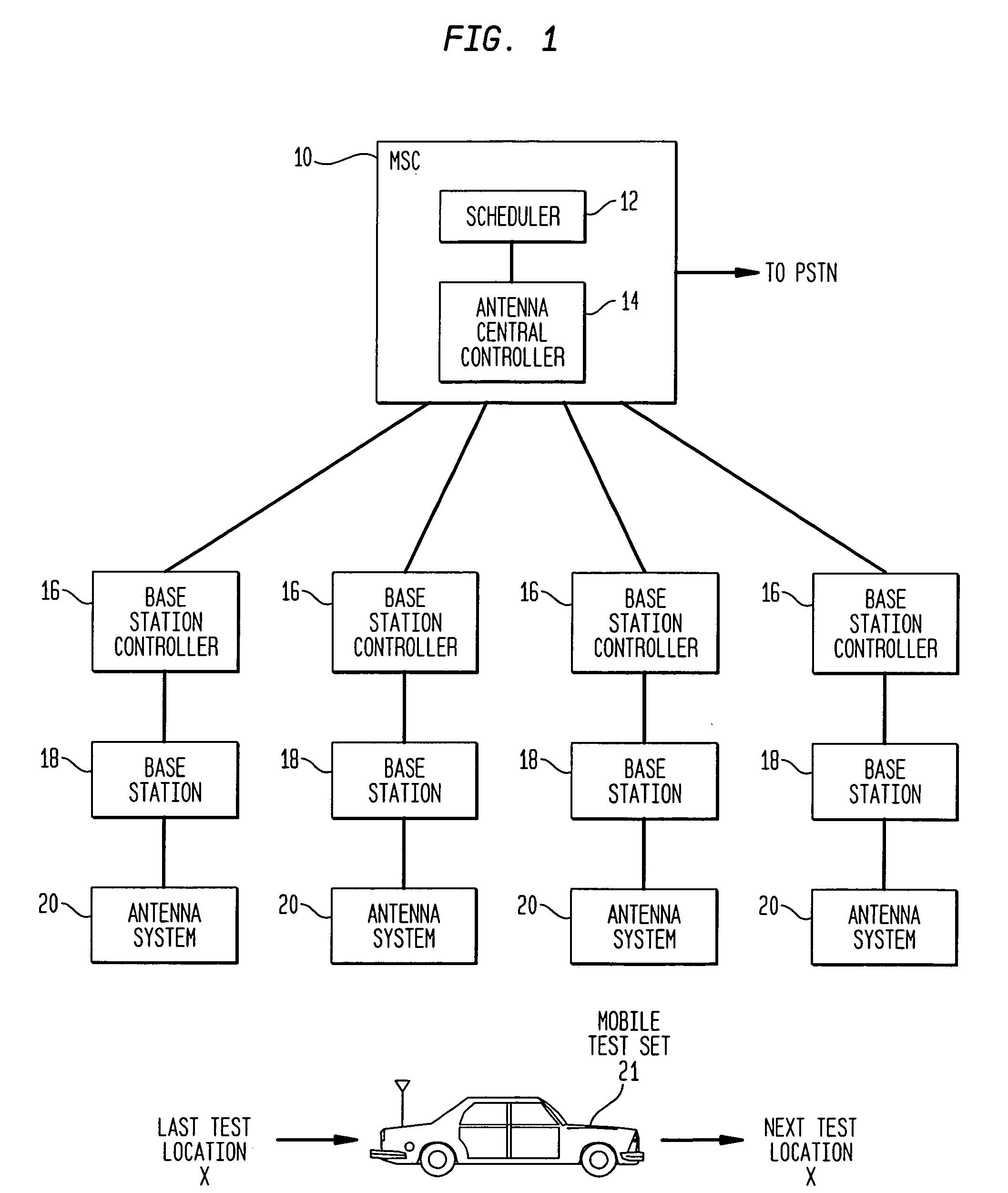System and method for adjusting antenna radiation in a wireless network
a wireless network and antenna radiation technology, applied in the field of wireless network system and method adjustment, can solve the problems of reducing the capacity of a wireless network, unnecessary expenditure of capital intensive cellular infrastructure, and affecting so as to increase the efficiency of radio frequency optimization
- Summary
- Abstract
- Description
- Claims
- Application Information
AI Technical Summary
Benefits of technology
Problems solved by technology
Method used
Image
Examples
Embodiment Construction
[0018]In accordance with the invention, FIG. 1 shows a wireless network including a mobile switching center 10 coupled to a plurality of base station controllers 16 via communication lines. A base station controller 16 is coupled to a base station 18 and an antenna system 20. In practice, a base station controller 16, base station 18, and an antenna system 20 may be co-located to form a cell site serving a geographic region via radio frequency coverage.
[0019]The mobile switching center 10 generally comprises any telecommunications switch suitable for supporting switching and control functions in cooperation with the base station controllers 16. In practice, the mobile switching center 10 communicates with at least one other telecommunications switch to connect the mobile switching center 10 with the public switched telephone network (PSTN), a wireless network, or both.
[0020]The mobile switching center 10 differs from many standard commercially available switches in two respects. Fir...
PUM
 Login to View More
Login to View More Abstract
Description
Claims
Application Information
 Login to View More
Login to View More - R&D
- Intellectual Property
- Life Sciences
- Materials
- Tech Scout
- Unparalleled Data Quality
- Higher Quality Content
- 60% Fewer Hallucinations
Browse by: Latest US Patents, China's latest patents, Technical Efficacy Thesaurus, Application Domain, Technology Topic, Popular Technical Reports.
© 2025 PatSnap. All rights reserved.Legal|Privacy policy|Modern Slavery Act Transparency Statement|Sitemap|About US| Contact US: help@patsnap.com



